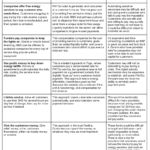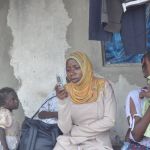Lights, Camera – Health Education: How Animated Videos are Advancing Maternal Health in India and Beyond
Inadequate care during pregnancy and delivery was largely responsible for 303,000 maternal deaths and 2.5 million newborn deaths globally in 2017. Every day, women around the world die from preventable pregnancy-related complications. Most of these complications can be prevented to a large extent by improving access to health care services during pregnancy, encouraging institutional deliveries, and in the event of complications, referring them to specialized care facilities.
But in India, with the limitation of infrastructure and resources, these preventive steps are often not implemented. The country had a maternal mortality ratio (the number of maternal deaths per 100,000 live births) of 122 in 2015-17 – compared to 11 deaths per 100,000 live births in high-income countries. Although the percentage of institutional deliveries has doubled in India in the last decade (2005 to 2015), increasing from 39% to 79% according to the National Family Health Survey, the proportion of institutional deliveries amongst the poor is only 59%. What’s more, there is just one government doctor for every 10,189 people, compared to the World Health Organization-recommended ratio of 1:1,000.
Several factors are preventing women from seeking medical attention, including: poor access and lower quality of health care facilities; the costs of care and lost income due to taking time off from work to visit health care facilities for check-ups; and lack of information regarding the importance of antenatal care for a healthy pregnancy. In light of these limitations, it’s clear that Indian women need greater awareness of the potential complications of pregnancy and their warning signs, so they can manage their health and wellbeing better.
Myths and Superstition: Assessing the Maternal Healthcare Situation in India
Myths and superstition are widely prevalent in India – especially those that relate to women’s and newborn health. For instance, in several ethnic communities in India, the highly nutritious colostrum is discarded, and breastfeeding is only initiated two to three days after delivery. In addition to breast milk, babies are also sometimes fed with water, honey or sugar syrup – all of which could be potential sources of infection. A common belief is that these fluids cleanse the babies’ digestive systems from potential impurities of the womb that may have been swallowed during birth. During pregnancy, soothsayers exploit gullible women by offering predictions of the gender of the baby based on irrelevant factors, such as the shape of the mother’s “baby bump,” or the foods she has ingested. Given the prevalence of such myths, quality health education that separates myths from reality is gravely needed.
In the hinterland, most of the information women have relating to health, pregnancy or newborn care is typically passed on from mother to daughter. While a lot of this information is based on time-tested (and medically valid) customs, oftentimes myths seep in, which may prevent women from seeking medical attention when needed. What’s more, women in India are still not very comfortable speaking about maternity issues to the doctor. And given the country’s low doctor-to-patient ratio, doctors do not have much time to dedicate to health education.
As a woman, practicing doctor and mother, I have a novel perspective on these issues. I’ve seen first-hand how this lack of awareness, combined with an often-low level of education, is preventing many women from understanding or acting upon issues involving their health, hygiene or nutrition during pregnancy. I’ve also seen how these limitations are intensified for illiterate women, who face formidable obstacles in understanding maternity-related issues without the benefit of written communication.
Though several state schemes intended to benefit pregnant women or lactating mothers have launched recently, women remain unaware of many essential practices that can make pregnancy, childbirth and newborn care safer. That’s why I believe that health education has an essential role to play in addressing these challenges. Certainly, interventions that directly impact the health and nutrition of a mother – like better health infrastructure and regular antenatal check-ups to identify problems early on – are important in reducing maternal mortality. But with the lack of resources to enable those initiatives, quality health information that separates myths from reality is particularly needed.
A Digital Solution for Health Education
In order to impart this education, how do we reach out to this disparate set of women from different parts of India? At a time when a revolution of sorts is happening in the digital world, one way to address the gap in health education is through digital media.
Millions of Indians are jumping on the digital bandwagon – mostly for the first time – and gradually discovering the possibilities that digital media can offer. Smartphone sales are on the rise. Aided by over 1 billion mobile phone connections and plummeting mobile data prices, the Indian government has an ambitious plan to connect every village to broadband services with fibre optics. These developments have opened exciting new opportunities for social impact-focused initiatives of all sorts – and health education is no exception.
However, while a significant amount of content is available in English, people in India are at a disadvantage, as there is simply not enough local language content on the web. English is not native to India, and even as a second language, less than 10% of the people speak it. To address this, I set out to create educational content in the languages that common people across India can understand – and that was the genesis of MedHealth TV.
Using Videos to Advance Maternal and Newborn Care
MedHealth TV focuses exclusively on women’s and newborn health. It features animated videos relating to pregnancy and newborn care in local languages. We have videos in four local Indian languages (Hindi, Telugu, Kannada and Tamil), in addition to Spanish, Arabic, Chinese and English. These four Indian languages are understood by more than 700 million people. Our videos are short (under five minutes), to the point, and in an animated format which can be easily comprehended by common viewers. We also have an app, where a user can fill in some basic health details and get videos relevant to her specific stage of pregnancy.
MedHealth TV’s videos seek to deconstruct myths and explain facts through a medium which can be easily understood by all. By empowering women with information, the health of the entire family can improve, as in most cases women are the caretakers of family health.
With content in eight languages, we are now reaching out to women across South Asia, the Middle East and other regions – and based on our increasing subscriptions and viewership, we’re making an impact. With over 80 million views and 190,000 subscribers, we are reaching a large but highly targeted audience. Our work has also gained the attention of others in the social impact sector: We’ve been honored to receive numerous awards, including the mBillionth Award 2017 (for inclusion and empowerment), and more recently the World Summit Award 2018. Our mission is aligned with the Sustainable Development Goals to help mitigate maternal and infant mortality, and contribute towards a healthier and safer society – and our approach is clearly resonating.
But so far, MedHealth TV has been running solely on owner equity – we have not had any external sources of funding. The biggest challenge we’ve faced has been to define a sustainable revenue model. Our only sources of revenue today are online advertisements, and they barely pay for our costs (web hosting, developing the content, etc.). To go onto a growth trajectory, we need to invest much more, and we are currently considering other sources of funding. If MedHealth TV morphs into a revenue-generating business, then my plan would be to expand laterally into other areas of health education, such as diet, lifestyle, alternative medicine and holistic health care – in as many languages as possible. We believe that this services is worth expanding and supporting – if you’re interested in learning more about our work, you can contact me here.
Padma Rammoorthy is the founder and director of MedHealth TV.
Photo courtesy of MedHealth TV.
- Categories
- Education, Health Care
- Tags
- public health



